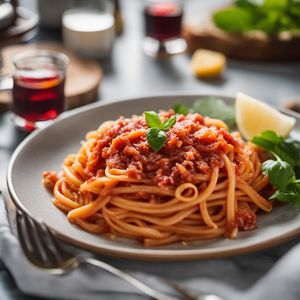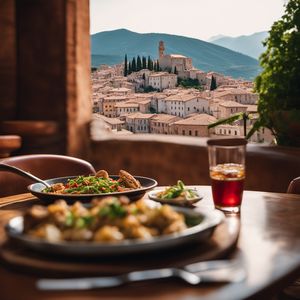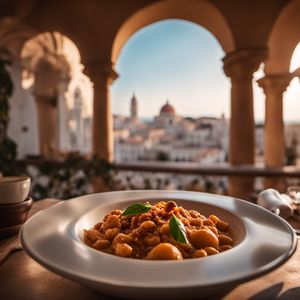
Dish
Tajarin al tartufo bianco d'Alba
Tajarin al tartufo bianco d'Alba is made with fresh egg pasta that is rolled out thin and cut into long, thin strips. The pasta is then cooked in boiling salted water until al dente. The truffle is shaved over the pasta just before serving, along with a drizzle of olive oil and a sprinkle of Parmesan cheese. This dish is a true delicacy and is often served as a special occasion dish in Italy.
Origins and history
Tajarin al tartufo bianco d'Alba originates from the Piedmont region of Italy, where white truffles are abundant. The dish has been a part of Piedmontese cuisine for centuries and is considered a true delicacy.
Dietary considerations
This dish is not suitable for vegetarians or vegans as it contains eggs and cheese. It is also not suitable for those with a gluten intolerance as it contains wheat flour.
Variations
There are many variations of this dish, including adding cream or butter to the sauce, or using black truffles instead of white. Some recipes also call for the addition of mushrooms or other vegetables to the dish.
Presentation and garnishing
When serving Tajarin al tartufo bianco d'Alba, shave the truffle using a truffle slicer or mandoline to get thin, even slices. Be sure to use fresh truffles, as they lose their flavor quickly. If fresh truffles are not available, truffle oil can be used instead, but use it sparingly as it can be overpowering. The dish is traditionally served in a shallow bowl, with the pasta arranged in a nest-like shape. The truffle shavings are then placed on top of the pasta, along with a drizzle of olive oil and a sprinkle of Parmesan cheese. A sprig of fresh parsley or thyme can also be used as a garnish.
Side-dishes
This dish is often served as a main course, but can also be served as a side dish to meat or fish. It pairs well with a full-bodied red wine, such as Barolo or Barbaresco.
Drink pairings
Tajarin al tartufo bianco d'Alba pairs well with a full-bodied red wine, such as Barolo or Barbaresco.
Delicious Tajarin al tartufo bianco d'Alba recipes
More dishes from this category... Browse all »

Agnolotti
Italian cuisine

Agnolotti del plin
Italian cuisine

Ají de fideos
Peruvian cuisine

Amatriciana
Italian cuisine

American Chop Suey
American cuisine

Anellini alla pecorara
Italian cuisine

Anolini in brodo
Italian cuisine

Baasto iyo suugo
Somali cuisine
More cuisines from this region... Browse all »

Abruzzese and Molisan cuisine
Savory, Earthy, Rustic, Hearty

Apulian cuisine
Fresh, Savory, Rustic, Simple

Arbëreshë cuisine
Savory, Tangy, Herbaceous, Spicy

Basilicatan (Lucanian) cuisine
Savory, Earthy, Rustic, Hearty

Ligurian cuisine
Light, Delicate, Herbaceous, Salty

Lombard cuisine
Rich, Savory, Meaty, Cheesy

Neapolitan cuisine
Bold, Savory, Spicy, Tangy, Fresh

Roman cuisine
Fresh, Light, Herbaceous, Tangy, Savory

